If you’re looking to get a VR headset in 2024, you may be struggling to choose from the variety of options available. Every year, we see headsets getting better and better, but as the technology is moving quickly, it’s important to choose a headset that will do everything you need it to, without becoming obsolete too soon. This article is going to discuss the best VR headsets available in 2024, looking at their strengths and weaknesses, to help you decide which one is right for you.
I own five of the headsets on this list, and I’ve tried all of the others except for one. I hope to be able to provide feedback about the pros and cons from my own personal experience to help you get a headset that you’ll be happy with. In addition to this article, I’ve also made a video covering my experience with these headsets, and you can watch this below.
Best VR Headsets 2024
The first thing to say is that there is no definitive best headset for everyone. The best VR headset for you will depend on what you intend to use the headset for, and how strongly you feel about the individual features. I’m going to provide an overview of each headset, highlighting the strengths and weaknesses, so you can decide which one best fits your needs.
Meta Quest 3
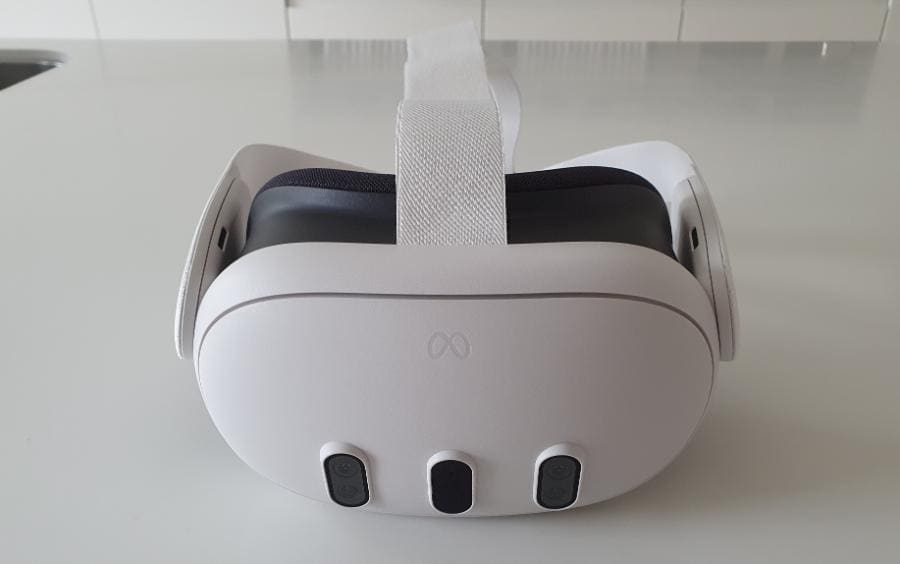
Meta Quest 3 is one of the best VR headsets to pick if you’re looking for a general-purpose VR headset that can do pretty much everything. It’s designed as a standalone headset, meaning it doesn’t need to be connected to a computer and can be used completely wirelessly. It has a huge library of games and applications thanks to several years of considerable support and investment in the Meta Quest store.
It features two LCD panels with a resolution of 2064 x 2208 pixels per eye and pancake lenses that are nothing short of spectacular, providing visual clarity that is a big step up from the Quest 2 and competes quite well with some of the best VR headsets available today.
Quest 3 provides a wider field of view than Quest 2, of 110° horizontal, and 96° vertical, allowing you to see more of your peripheral vision and improving immersion.
Quest 3 comes with a fabric headstrap which does a mediocre job of keeping the headset secure, and the headset weighs 515g, with all of this weight being in the headset itself. For this reason, it’s not the most comfortable headset, but it’s perfectly fine to use for 1-2 hours at a time.
The battery life comes in at about 2 hours, which is a little short, and you may wish to upgrade your headset with an external battery if you really enjoy using it. One of the best ways to solve the comfort and battery life issues is to use a rigid battery strap, and there are several excellent options to choose from, including the KIWI Design battery strap, BOBOVR S3 Pro, and the official Elite strap with battery.
The Quest platform has received considerable investment in content over the last few years, and there have been a lot of really good games released on it that can be played on either the Quest 3 or the Quest 2. Many games have updated graphics on Quest 3, but the overall functionality of most games is quite similar.
One standout feature of Quest 3 is the mixed reality support. Quest 3 uses front-facing cameras to display your real world, and mixed reality games then overlay virtual content on top of your real world. In its simplest form, you can use mixed reality to play VR games while your real-world remains in view, but there are a growing number of games that actually integrate features of the real world into the gameplay.
One of my favorite examples is PianoVision, which lets you overlay virtual piano keys on top of a real piano, and the application then shows you what notes to play and when, helping you learn to play the piano, and have a lot of fun in the process.
In addition to the excellent standalone content on Quest 3, you can also connect your headset to a VR-ready PC, either via a USB-C cable or wirelessly. This opens up the possibility of playing a wide range of PC VR content on your Quest 3. There is native support for this, as well as third-party support from Steam and Virtual Desktop. All of these solutions work fantastically well without any troubleshooting and is a major advantage of choosing a headset such as the Quest 3.
Other than the poor comfort and battery life out of the box, the only other significant downside is the price. At $499.99 / £479.99 for the 128GB model and $649.99 / £619.99 for the 512GB model, it isn’t cheap, particularly if you’re buying it as a first VR headset. When you factor in the cost of a better head strap or battery head strap, the cost mounts up. Although it’s pricey, you get a lot of technology for your money, and it is strongly suspected that Meta is selling Quest 3 at around breakeven, so I do think it’s great value for what you get.
If you’re looking for the best all-around VR headset that you can buy today, Quest 3 definitely gets my vote. If it’s a bit too pricey for you’re liking, I’ve got a few others on this list that may be more appealing.
Meta Quest 2
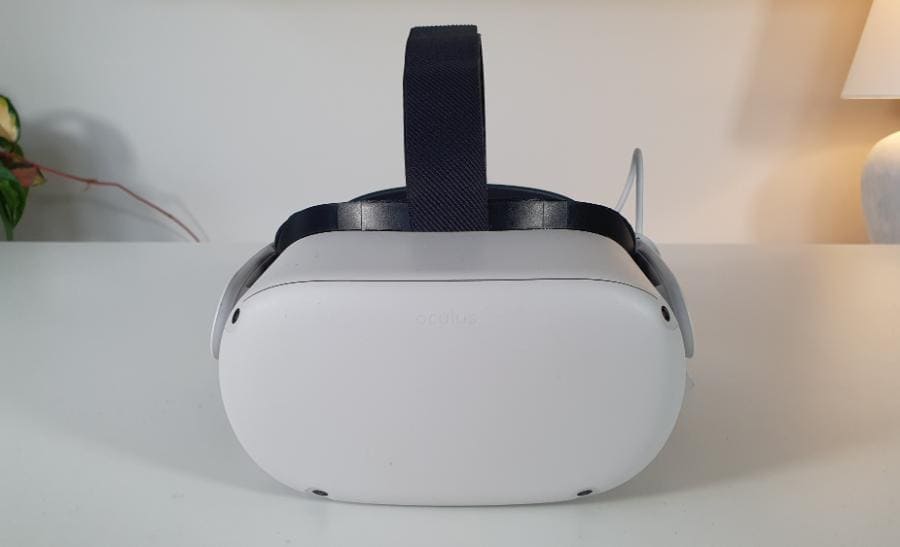
Meta Quest 2 is the direct predecessor to the Meta Quest 3, and although it was released in 2020, it still stands up very well to the competition. The key advantage of Quest 2 is that you can play all of the same VR content as you can on Quest 3, admittedly with less impressive graphics, but it comes in at an incredible price point of $249.99 (£249).
The internal processing power is only about half of what you’ll find in Quest 3, it uses fresnel lenses, which have reduced clarity and a smaller sweet spot, reduced FOV of 97° horizontal, 93° vertical, and a less appealing form factor.
Despite the less impressive hardware, Quest 2 is still a great option due to the impressive amount of VR content available to play on the Meta Quest platform. You can also connect your Quest 2 to a VR-ready PC via USB-C cable or wirelessly, to enjoy PC VR content in exactly the same way as Quest 3.
I used Quest 2 from when it was first released until the day Quest 3 was released. It’s a headset that I really like and enjoyed for a long time, and still has a lot to offer, particularly at such an attractive price point. With over 20 million Quest 2 headsets sold, it’s going to be supported for many years to come and provides a great option to try VR for the first time without spending a fortune.
Another point in favor of Quest 2 is that the graphics on Quest 2 and Quest 3 are both inferior to those you will find on a dedicated gaming PC or console, due to both headsets being powered by mobile chips. The enjoyment of using both these headsets isn’t in the incredible visuals, but in the immersive experiences that you’re able to have in VR.
Most of my favorite VR games intentionally use stylized, simplistic graphics, and the lack of photorealism doesn’t detract from the experience at all. When Quest 3 first came out, I had a more negative opinion of Quest 2 as I was completely blown away by Quest 3, and still am. However, Quest 2 is still a very good headset, and the recent, permanent price reduction means that it offers exceptional value.
Pimax Crystal
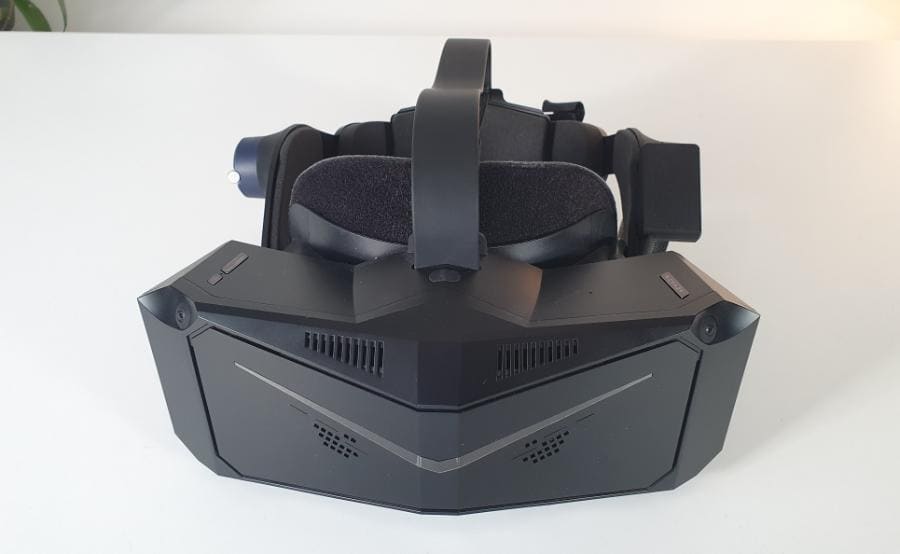
If visual clarity is the most important factor for you when choosing a VR headset, then the Pimax Crystal has to be on your shortlist. Whilst the Crystal’s pursuit of visual perfection comes with many drawbacks, it provides visual clarity that is simply breathtaking. This is a tethered, PCVR headset primarily and boasts two QLED displays with a resolution of 2880×2880 pixels per eye, excellent aspheric lenses, local dimming, a reasonably good FOV, eye tracking, and foveated rendering.
The overall package produces visuals that are the very best that I have ever experienced in a VR headset. There is a significant improvement in clarity over Quest 3, and it’s perfect for users where achieving visual clarity that is as good as possible is priority number one.
The drawbacks are that it is bulky and not particularly comfortable for long periods of use. The facial interface does a reasonable job, but the bulk and front-weighting of the headset means that it inevitably starts pressing against my nose and cheeks after a while. If you turn your head suddenly, you will feel the inertia of the headset, and it can be a bit uncomfortable.
Despite this, I love using Pimax Crystal for seated PC VR, and I predominantly use it to play DCS World, where it provides a fantastic experience. I am able to use the headset for several hours at a time without it feeling particularly uncomfortable. It’s not a headset that I would recommend for doing high-tempo room-scale activities, as it’s simply too big and bulky to be practical or comfortable for this use.
Pimax Crystal isn’t as user-friendly to setup and use as some of the other headsets on this list, and I have encountered some hardware and software issues that took a little effort to fix, but I have also seen a steady stream of software improvements over the past few months, and it does now offer a much more polished experience.
One of the other stand-out features of the Pimax Crystal is its eye-tracking and foveated rendering. Eye tracking enables the headset to automatically set the IPD when you put the headset on, ensuring that your eyes are perfectly in the sweet spot of the lenses every time.
In addition, eye tracking allows for foveated rendering, where only the portion of the screen in the center of your vision is rendered at high resolution, with everything else being rendered at lower detail. This means that you can achieve smoother performance and better graphics than you would otherwise be able to achieve without this feature.
When I first got the Pimax Crystal, this feature was not available, and the headset brought my computer to its knees due to having to output to two panels with 2880 x 2880 resolution. As a result, I had to compromise significantly with the visual quality to achieve smooth gameplay.
Since the eye-tracking and foveated rendering have been perfected, I now see significantly better performance and am able to push the graphics settings on DCS World up very high, while still achieving smooth gameplay.
Pimax Crystal is an expensive headset, coming in at $1600 (£1300). There is a cheaper Crystal SIM version that comes without controllers, which does make it a little more affordable for some users. It’s a headset for enthusiasts who demand the very best visual quality and are prepared to compromise regarding comfort and ease of use. For most people, a less expensive PCVR headset will be more than sufficient, but for a small cohort of users, Pimax Crystal it’s an awesome headset.
Pico 4
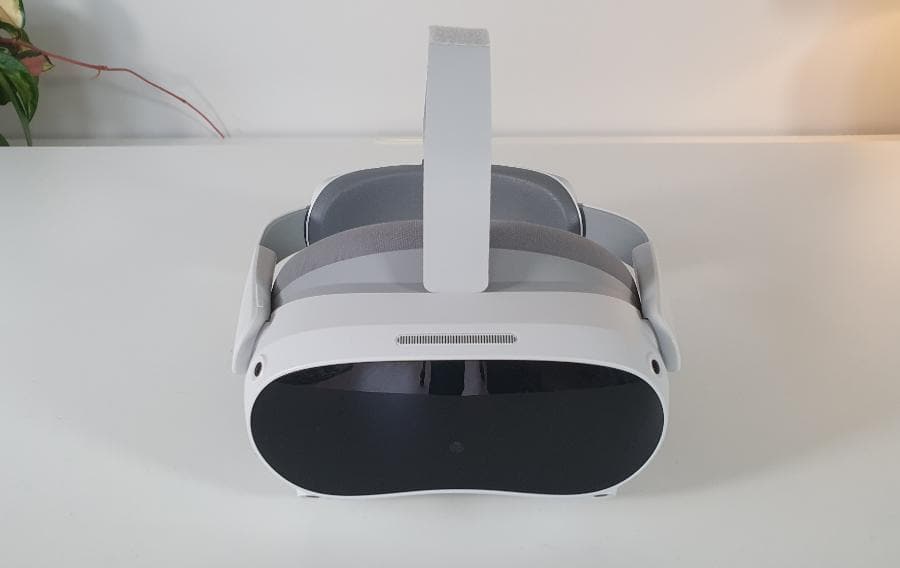
The Pico 4 is another standalone headset that can also be used as a PC-VR headset via a wired or wireless connection. Priced at about £330 ($380), it is a terrific option for those looking for a great value PCVR headset. It has dual LCD panels with a resolution of 2160×2160 pixels per eye and pancake lenses that are great, but not quite as good as Quest 3.
It has a rear-mounted battery meaning it feels balanced on your head without having to resort to a 3rd party headstrap. The comfort level is reasonable, but not as good as you would imagine thanks to the face gasket that just doesn’t fit my face very well.
Pico 4 has very slightly higher resolution than Quest 3, a similar FOV, and great lenses, but it has a much more limited library of content, and the processing power is similar to Quest 2. Bytedance, the company behind Pico 4 has significantly downsized its VR division and it’s hard to recommend this headset for people only interested in standalone VR, as the support and development of content is going to be significantly hampered.
Where it shines is as an affordable, and very impressive PCVR headset. It does only have a USB connection, rather than a direct DisplayPort, so you will see some visual degradation, and a little latency, but it’s only going to trouble those playing extremely high tempo or competitive games. Overall, Pico 4 remains a terrific option to play PCVR content for an affordable price.
Bigscreen Beyond
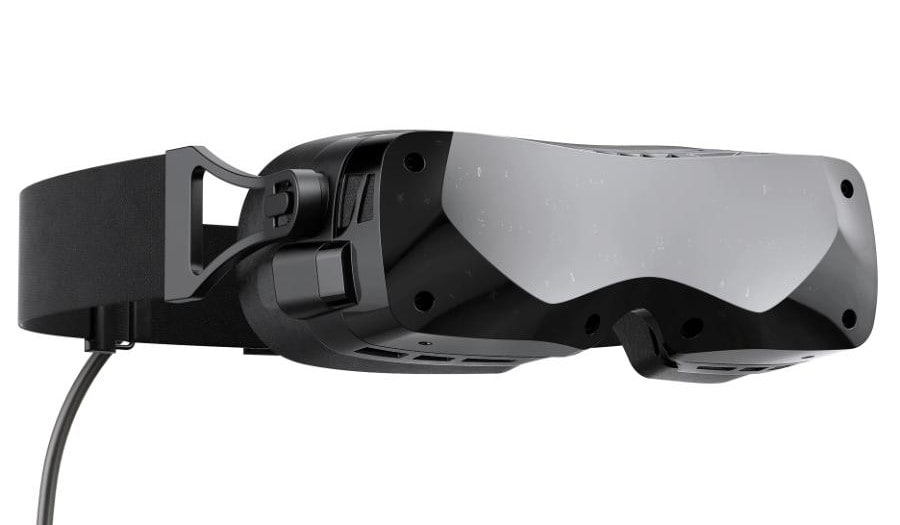
Bigscreen Beyond is an incredibly tiny, light, and comfortable headset that is quite unlike any other headset currently on the market. It has two micro-OLED panels with a resolution of 2560×2560 pixels per eye and pancake lenses that produce excellent visual clarity and terrific color contrast.
The Bigscreen Beyond only weighs about 180 grams including the face gasket and head strap, which seems impossibly light, but it does achieve this with a few tradeoffs. It doesn’t have inside-out tracking, so you will need to use external tracking stations and doesn’t have integrated audio, although it does have a 3.5mm headphone jack so you can connect whatever audio solution you like.
In addition, it doesn’t come with controllers, so you will need to source a suitable pair of SteamVR-compatible controllers for the headset. At $1000 for the headset, plus the additional cost of external tracking stations, controllers, and an audio solution, it means it’s a pretty pricey headset.
The FOV is about 98° horizontally, which is roughly the same as Quest 2, but the lenses have a relatively small sweet spot, meaning the visuals look crystal clear in the very center, but visual clarity drops off as you move your eyes toward the peripheries of your vision. This combination makes the FOV seem a little smaller than it actually is, more like that seen on the HP Reverb G2.
When ordering the Bigscreen Beyond, you’ll need to provide a measurement of your IPD, as this is set at the time of manufacture and can’t be adjusted. You also need to take a scan of your face using an iPhone or iPad so that Bigscreen can custom-make a face gasket for the shape of your face.
This means the headset fits incredibly well and is very comfortable to wear, whilst also ensuring that the IPD is always correct when you wear the headset. The downside is that it is difficult to share your headset with others unless you have a similar IPD and face shape to the person who owns the headset.
I don’t own a Bigscreen Beyond, but I had the pleasure of using one for a day, and thankfully their IPD and face shape were close enough to mine that I could experience the headset in reasonably ideal conditions. Despite this, you need to bear in mind that my opinion on this headset is not based on as much experience as with the other headsets on this list. Whilst I was using a headset that pretty much matched my IPD, I obviously wasn’t testing it with a custom-made face gasket.
Bigscreen Beyond is a great headset for people who want a customized, comfortable, light VR headset, and don’t mind the trade-offs that come with this approach. The OLED panels make it a great headset for media consumption, but a less suitable headset for fast-paced games, where the OLED-panel-induced motion blur may detract from the experience.
Apple Vision Pro
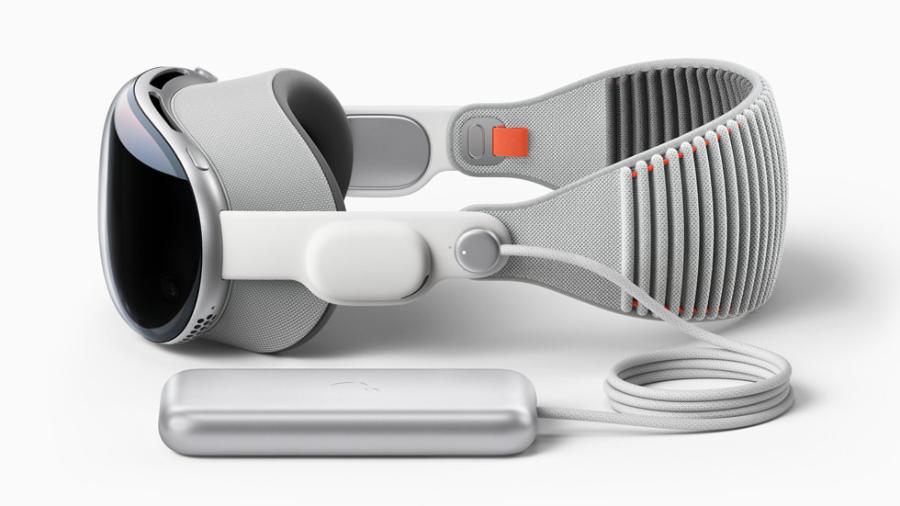
The Apple Vision Pro marks Apple’s first entry into the VR/AR industry, and it’s a terrific debut, with hardware and software that are extremely impressive. At $3500 for the base model, I would expect nothing less. The amount of technology crammed into the Apple Vision Pro is incredible and exceeds that of any other headset currently available.
However, the thing that struck me with the Apple Vision Pro was that it isn’t as far ahead of other headsets as I thought it would be. Whilst it’s objectively better in terms of hardware than Quest 3, I think it’s only one generation of headset ahead, and that competing headsets from Meta (Quest Pro 2) and a high-end headset from Samsung, both of which are rumored to release in the next year, are likely to match the hardware specs of the Apple Vision Pro.
In addition, the lack of controllers for Apple Vision Pro immediately makes it much more difficult to enjoy a large proportion of current VR applications. Whilst I think Apple has to be commended for going for such an ambitious control scheme, using just your eyes and hands to control the headset, it does leave the amount of available content on the Apple Vision Pro looking a little sparse.
As I’m based in the UK, I haven’t had a chance to use the Apple Vision Pro yet, so I don’t think I can comment further about this headset. All I can say is that I’m delighted that Apple has entered the industry, as they will inevitably drive the technology forward and increase competition, which is likely to be beneficial for consumers.
Last Word
Whilst there were several other headsets that I could have discussed in this article, I wanted to keep it to the headsets that I consider to be the best VR headsets available in 2024, rather than covering older headsets that are becoming obsolete, or other headsets that don’t quite make the grade in my opinion. I hope this has been a useful article and helps you choose a VR headset you’ll be happy with.
